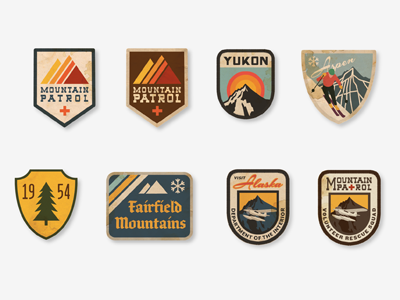Is bad design costing your business?
A lot of small business owners overlook the ways that compelling graphic design can grow their company. For example:
• A strong, clear visual identity helps your brand stand out among competitors
• Strategically designed landing pages dramatically drive up leads
• A visually compelling website instantly connects with prospects and boosts sales
• Inviting, easy-to-read content increases site engagement, blog traffic, and shareability
The numbers back it up. According to Adobe, 38% of people will stop engaging with a website if the content or layout is unattractive.
This study of health websites found 94% of a website user’s first impressions came from the design, not the content.
But even if you know good design is important, it can feel intimidating or risky to hire a graphic designer, especially if you’re a small business on a limited budget.
Is it going to be super-expensive? What if I don’t like the result? How do I even know whether or not a design is good?
It can feel overwhelming, but there are a handful of things you can do to make the process a positive one. Try these six strategies to help you get a beautiful design — on time and on budget — that grows your business.
Find a designer who’s a good fit for you
When you’re on the hunt for a designer, look at their portfolios for examples of work that is consistent with what you want your final product to be. There are tons of designers out there, all of whom excel at different aspects of design.
If you need help finding designers, ask friends and colleagues with similar sensibilities to recommend someone.
Before you decide to hire a designer, ask about his or her specific role on the portfolio examples you like. For example, if you love the illustration style in one design, make sure your designer was responsible for that element and not, say, the layout. This will help you be sure your designer has the ability to deliver what you want.
Provide helpful inspiration
The best way to tell designers what you’re after? Show them!
It’s easier than ever to find design inspiration with sites like Pinterest, Instagram, and Dribbble. When something catches your eye, say specifically what you like about a particular logo, email, website, brochure, etc. The more detailed you can be, the better. Are you drawn to the colors, a particular font, the layout, or the overall aesthetic?
For example, say you’re wanting a new logo and you find this example on Dribbble.

Designed by Dustin Wallace
Vague: “I really like these!”
Helpful: “I love the vintage feel of these, especially the colors, but I’m not crazy about the fonts.”
Be clear about the goals for your design.
In addition to gathering visual inspiration, communicate the goal and intention of your project to the designer. Give your designer the big-picture view and clearly state how this design relates to your business’s overall goals.
Not as helpful: “I need a logo for a new product line.”
Helpful: “I need a logo for a new product line that we’ll be promoting on Facebook. We realized that no one in our space is reaching millennials, so we want this brand to appeal to people who are 18-30 years old.”
Remember, too, that great design is more than aesthetics. It also supports the overall business goal. Function over fashion wins in design over and over again. When a designer can marry good design while accomplishing your goal, you’ve hit the sweet spot.
This quote from world-class designer Jeffrey Zeldman sums it up nicely:
“Content precedes design. Design in the absence of content is not design, it’s decoration.”
Remember this when you’re evaluating portfolios and reviewing your designer’s work. Ask yourself whether a particular design works well before you focus too much on the aesthetics.
Set a timeline along with deadlines
In addition to talking about the work, talk about the process.
Ask the designer what his or her process is and how you’ll work together. Communicate your needs as well. Do you want to see early drafts along the way so you can get a feel for the direction? How many days do you need to get approval from your stakeholders?
It’s important to establish a timeline. First, bring realistic expectations to the table — no good designer is going to turn around a well thought out logo for you in 24 hours.
Second, give yourself lead time between seeing the first few drafts and the final product. This buffer time for revisions gives you the ability to get the product you want. Finally, work with your designer to set deadlines for each stage of the process so your project stays on time.
Get the right feedback.
Be particular when you invite others to review the draft of your project. One wrong cook in the kitchen can easily spin the project out of control and create problems for your budget and timeline.
Instead, show a selective group your mockups so you are able to see the project from other perspectives. How does this work from a sales perspective? Does this resonate with our customer? What is being communicated?
At the very least, make sure anyone you ask knows the broader business goals behind the project. For example, you may want to ask your mom her opinion on your logo design, but if she doesn’t know the business goals, her feedback will naturally be focused on her opinion of the visuals. Plus, if your target customer is a twentysomething entrepreneur, she may not be the best person to ask in the first place.
Make smart revisions.
Because design can be subjective, you are bound to have a few revisions.
As you’re reviewing your drafts, keep the overall goal in mind. Do the design choices support the overall business strategy?
Be open to new ideas, too. You know your business, but sometimes being too close to it keeps us from seeing big-picture possibilities. Let your designer bring fresh insight.
Make sure all the key stakeholders have had a chance to review it, then consolidate your revisions into a single list.
Be specific about why you like what you like and what you don’t.
Vague: “Make it pop!”
Helpful: “I feel like the headline of the ad is getting lost because the image in the background is too busy.”
Finally, trust your instincts. Make sure you get that “YES!” feeling in your gut. Your designer is a tremendous partner, but ultimately, you make the final call.
—
Hopefully these guidelines will empower you to hire and work with a fantastic graphic designer. With clear communication and respect for each other, you’ll forge a great collaboration that will grow your business.
This article first appeared in www.buildingastorybrand.com
Seeking to build and grow your brand using the force of consumer insight, strategic foresight, creative disruption and technology prowess? Talk to us at +9714 3867728 or mail: info@groupisd.com or visit www.groupisd.com




